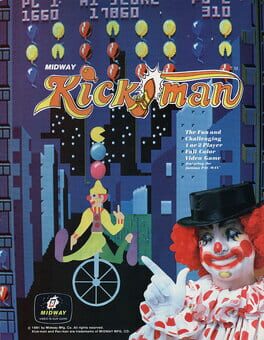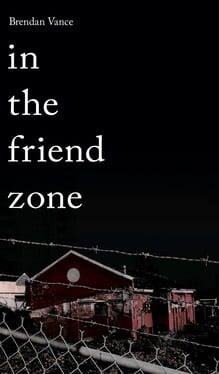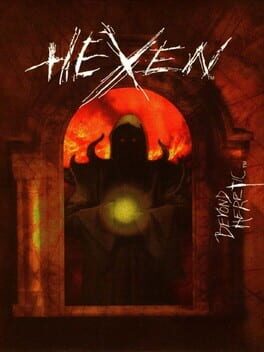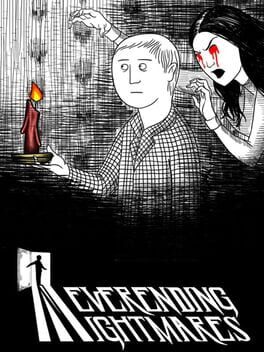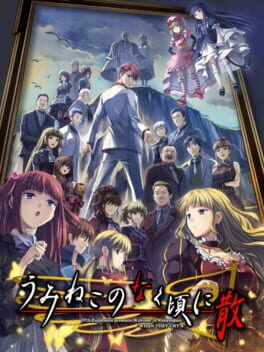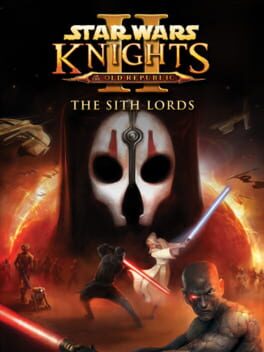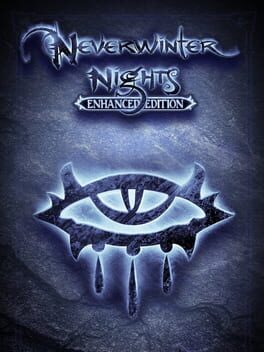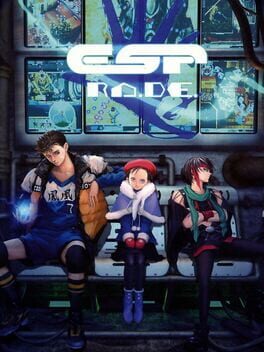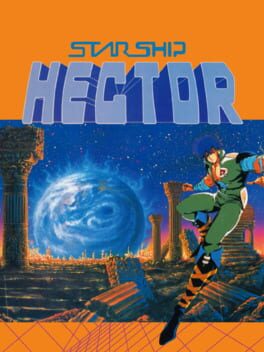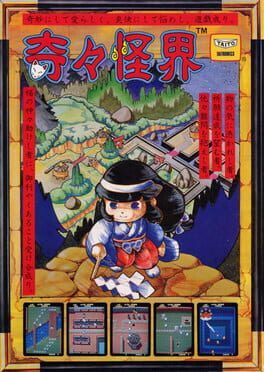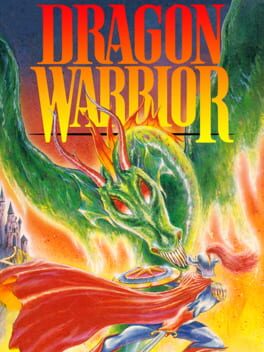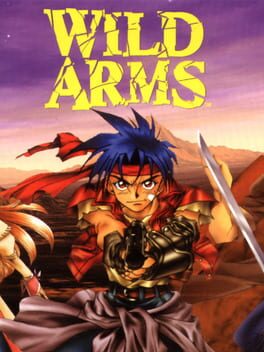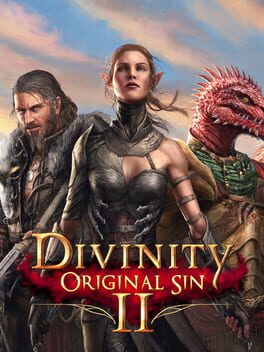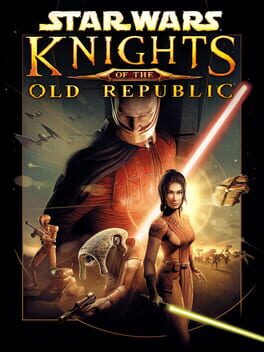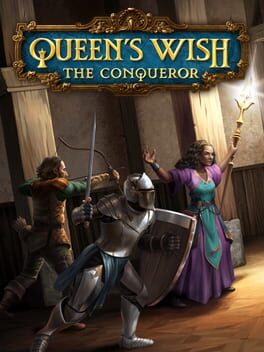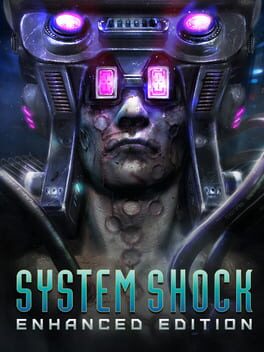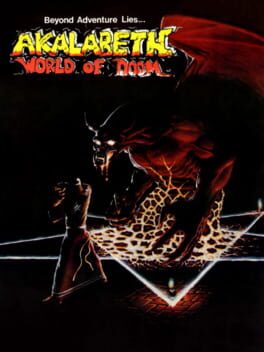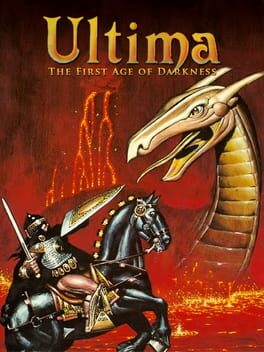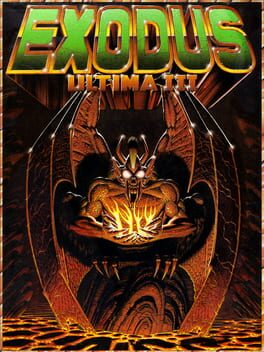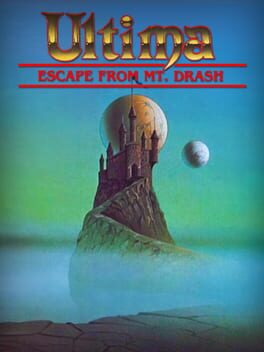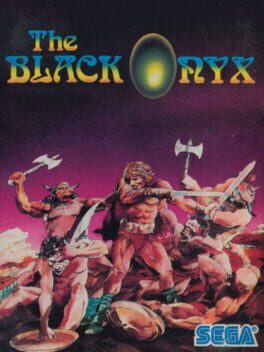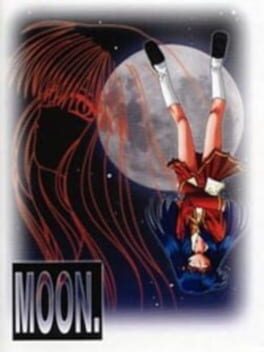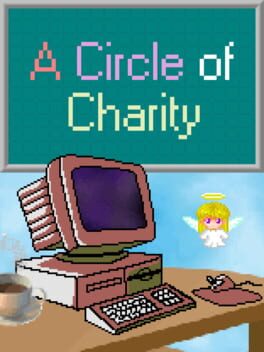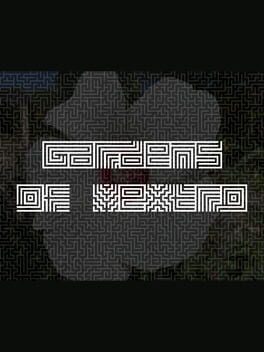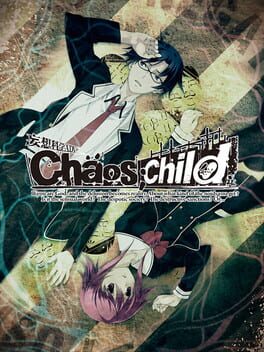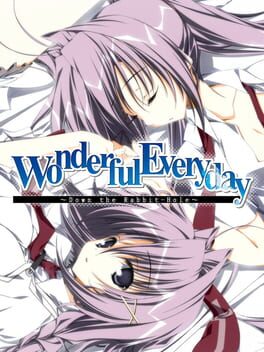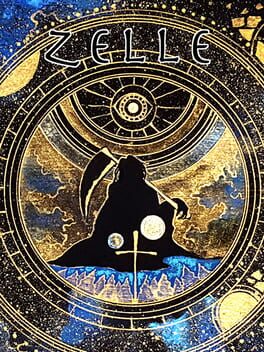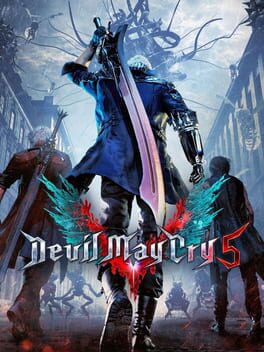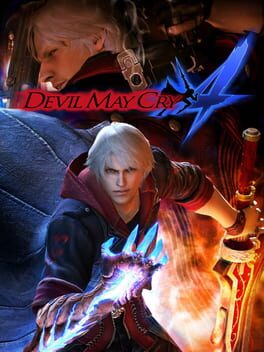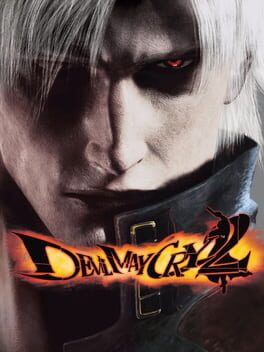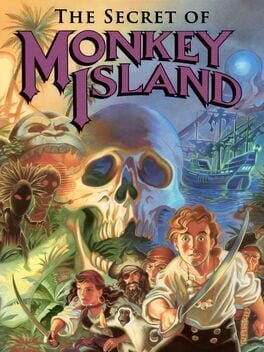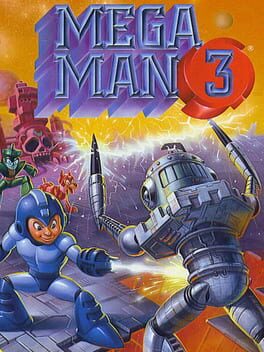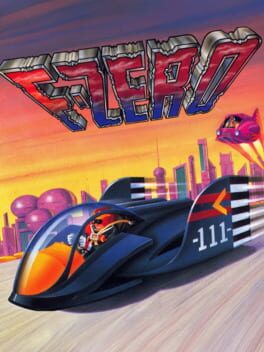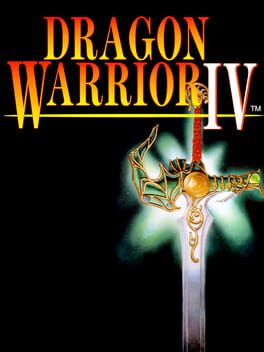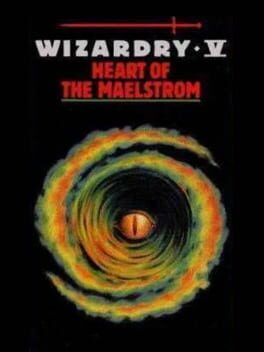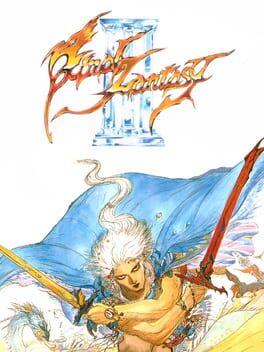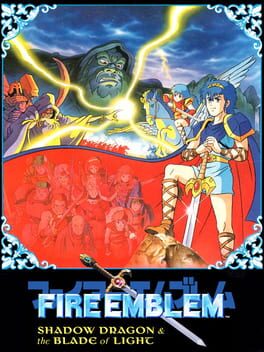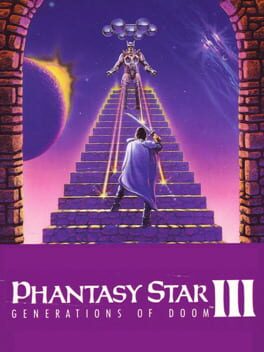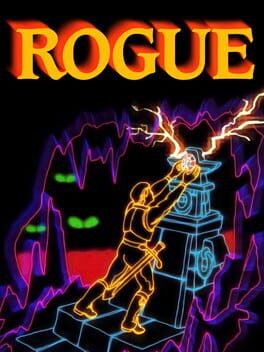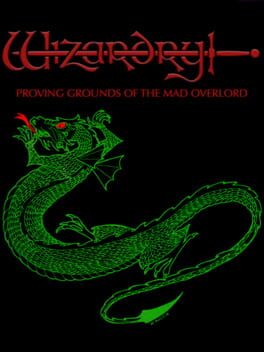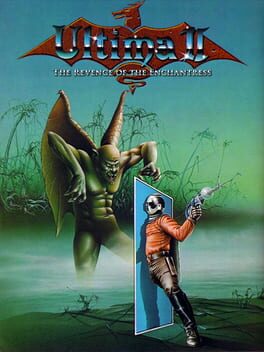farawaytimes
29 reviews liked by farawaytimes
Kickman
1981
(played the commodore 64 version because it’s joystick controlled. oh… how I would be fulfilled in life… if only I could experience a real Kickman cabinet…)
Kickman seems like a naturalization of (outdated, specific to the 80’s) gaming stereotypes. it doesn’t really “get” it and it’s not trying to. it views the arcade game as another type of carnival game—nolan bushnell quite literally thought this as well when he ripped off Spacewar!—creating no pretense of a clean break, new tradition, or legitimate artistic practice. this clumsy shortcut is naïve and clumsy and extremely funny.
because this game has no juice, and isn’t about anything, it seems to parodize the tantalizing promises of other games. consider it literally: you aren’t surviving, you aren’t controlling, you aren’t a hero. like, you’re a clown. this is who you are now. as a clown, you ride your unicycle to work, you peddle around alleyways, you do tricks on command. the kitsch disinvestment holds up a kind of exaggerated mirror on this era of arcade games.
“why do I gotta be a clown…” I think, reasonably, as if all gameplay representations are very serious and not comedic in their failures to approximate. with the city laid out before your clownship, it’s also forced into an incomprehensible stillness. civilization has parted ways, all signs of life have vanished, so the clown labors may commence. what are clown labors? well…! as we all know, the clown must feed pac-man balloons in order to maintain his claim to clownship.
arcade games are on a spectrum between determinism and indeterminacy. Kickman continues being fucking hilarious by being almost all indeterminacy. think of the game as a cross between Crane’s Kaboom! and Wozniak’s Breakout. like Kaboom!, objects (specifically balloons and pac-man effigies) fall fast, from random spots on the screen, and need to be stuck or popped (behavior determined by the round) by the player-bucket. ideally, you want to play the game like a medium-paced Kaboom! variant. the tricky part is when you “stack” things, your hitbox dynamically changes as well. there’s a lot of stuff you gotta pay attention to! it’s one of those games where you have no choice but to stare peripherally and mind-meld, you literally become the clown… except, Kickman is too baroque for that, so its random pattern will eventually be unsolvable under this paradigm of move-and-catch.
a clown is nothing without his tricks, and a Kickman is nadda without his kicks. when put into this unsolvable scenario—honk! the clown breaks from his unicycle, so, so briefly, to deliver the perfect splits. remember, he is not clownman, he is Kickman! a kicked balloon behaves like a ball hit by the Breakout paddle. these now arcing balloons can be kicked indefinitely. dropped objects are also rate-locked: if you’re kicking three things, no more will fall. this makes Kickman an agonizing pile of split-second decisions. intuitively, I wanted to pick up balloons as soon as I was able, but the arcs that kicked-balloons follow are also, essentially, random, so avoiding game over often means juggling balloons until you can collect them in a way that leads into collecting the new one which falls immediately after any collection.
as I’m trying to (successfully) believe this is a lost work of art, I’m also trying to gaslight myself into believing there’s no unwinnable scenarios in this game. the most evil thing the game can do is a split, meaning the dropping of the farthest-apart objects falling in sequence, and it happens a bit too often. I have caught splits, but it’s hard as fuck! if you’re already juggling something, and catching it causes a split to happen, well, you’re probably going to clown jail. the amount of mental-processing that has to be done at round 6 and above is beyond my ability. every time I make the right decision to keep kicking and prolong my clown-destiny, to find those synchronic cyberclown grooves, I feel like the authority on clowning around. but most of the time, I make the wrong decision. us clowns are under immense pressure in late capitalism…
when early videogames are literally about accumulation (so reminder, here it’s stacking balloons, pac-man trinkets, and uh, feeding your stacked pac-mans other balloons and trinkets), there’s a kind of primal resonance that makes me pay attention. steven poole’s landmark textual reading of Pac-Man in his book Trigger Happy alchemizes the infinite chase back into life: “For Pac-Man, consumption cannot end; no conceivable quantity of dots is enough. He will continue to search them out and eat them until he dies.”
in Kickman, this consumption not embodied by a cartoon mascot. this extension of corporate power is, instead, being forced into the entertainer’s work, it's being directed by one externally. in Kickman, the clown must work with and compete against pac-man. pac-man intrudes on his clown labors, orientating his work around him, which before (in the progression of stage 1 to stage 2) were simple balloon tricks. pac-man will eat (literally, consume) balloons that were previously integral to the clown’s work. now the entertainer works to feed pac-man. but pac-man cannot clear out other pac-mans, leading to “dead” spaces in the clownworks, where these old mascots starve, and the entertainer scrambles to make sense of this new order. this progression sounds like something… something nearby… hmm…
Kickman seems like a naturalization of (outdated, specific to the 80’s) gaming stereotypes. it doesn’t really “get” it and it’s not trying to. it views the arcade game as another type of carnival game—nolan bushnell quite literally thought this as well when he ripped off Spacewar!—creating no pretense of a clean break, new tradition, or legitimate artistic practice. this clumsy shortcut is naïve and clumsy and extremely funny.
because this game has no juice, and isn’t about anything, it seems to parodize the tantalizing promises of other games. consider it literally: you aren’t surviving, you aren’t controlling, you aren’t a hero. like, you’re a clown. this is who you are now. as a clown, you ride your unicycle to work, you peddle around alleyways, you do tricks on command. the kitsch disinvestment holds up a kind of exaggerated mirror on this era of arcade games.
“why do I gotta be a clown…” I think, reasonably, as if all gameplay representations are very serious and not comedic in their failures to approximate. with the city laid out before your clownship, it’s also forced into an incomprehensible stillness. civilization has parted ways, all signs of life have vanished, so the clown labors may commence. what are clown labors? well…! as we all know, the clown must feed pac-man balloons in order to maintain his claim to clownship.
arcade games are on a spectrum between determinism and indeterminacy. Kickman continues being fucking hilarious by being almost all indeterminacy. think of the game as a cross between Crane’s Kaboom! and Wozniak’s Breakout. like Kaboom!, objects (specifically balloons and pac-man effigies) fall fast, from random spots on the screen, and need to be stuck or popped (behavior determined by the round) by the player-bucket. ideally, you want to play the game like a medium-paced Kaboom! variant. the tricky part is when you “stack” things, your hitbox dynamically changes as well. there’s a lot of stuff you gotta pay attention to! it’s one of those games where you have no choice but to stare peripherally and mind-meld, you literally become the clown… except, Kickman is too baroque for that, so its random pattern will eventually be unsolvable under this paradigm of move-and-catch.
a clown is nothing without his tricks, and a Kickman is nadda without his kicks. when put into this unsolvable scenario—honk! the clown breaks from his unicycle, so, so briefly, to deliver the perfect splits. remember, he is not clownman, he is Kickman! a kicked balloon behaves like a ball hit by the Breakout paddle. these now arcing balloons can be kicked indefinitely. dropped objects are also rate-locked: if you’re kicking three things, no more will fall. this makes Kickman an agonizing pile of split-second decisions. intuitively, I wanted to pick up balloons as soon as I was able, but the arcs that kicked-balloons follow are also, essentially, random, so avoiding game over often means juggling balloons until you can collect them in a way that leads into collecting the new one which falls immediately after any collection.
as I’m trying to (successfully) believe this is a lost work of art, I’m also trying to gaslight myself into believing there’s no unwinnable scenarios in this game. the most evil thing the game can do is a split, meaning the dropping of the farthest-apart objects falling in sequence, and it happens a bit too often. I have caught splits, but it’s hard as fuck! if you’re already juggling something, and catching it causes a split to happen, well, you’re probably going to clown jail. the amount of mental-processing that has to be done at round 6 and above is beyond my ability. every time I make the right decision to keep kicking and prolong my clown-destiny, to find those synchronic cyberclown grooves, I feel like the authority on clowning around. but most of the time, I make the wrong decision. us clowns are under immense pressure in late capitalism…
when early videogames are literally about accumulation (so reminder, here it’s stacking balloons, pac-man trinkets, and uh, feeding your stacked pac-mans other balloons and trinkets), there’s a kind of primal resonance that makes me pay attention. steven poole’s landmark textual reading of Pac-Man in his book Trigger Happy alchemizes the infinite chase back into life: “For Pac-Man, consumption cannot end; no conceivable quantity of dots is enough. He will continue to search them out and eat them until he dies.”
in Kickman, this consumption not embodied by a cartoon mascot. this extension of corporate power is, instead, being forced into the entertainer’s work, it's being directed by one externally. in Kickman, the clown must work with and compete against pac-man. pac-man intrudes on his clown labors, orientating his work around him, which before (in the progression of stage 1 to stage 2) were simple balloon tricks. pac-man will eat (literally, consume) balloons that were previously integral to the clown’s work. now the entertainer works to feed pac-man. but pac-man cannot clear out other pac-mans, leading to “dead” spaces in the clownworks, where these old mascots starve, and the entertainer scrambles to make sense of this new order. this progression sounds like something… something nearby… hmm…
freud imagined that everything fictional or aspirational was masking a sexual desire or neurosis. someone develops some desire, probably as a child, which had to be repressed. and so, everything idealistic would be a different type of fantasy that connects to repression. a fantasy of the unknowable desire, or most often usually just a fantasy of sex, and these get funneled into a fantasy of domination. okay, I admit that’s ahistorical, he wouldn’t bring power into it, that’s for his fans and recuperators. but that’s sort of this historical throughline of the “power fantasy.” gamers and gamer-haters, does that ring a bell?
there’s something convincing (but untrue) in blanket freudian statements like… well, everything we do is because of sex, or it’s because of traumas, or it’s because of both. the lie of freudian displacement is that people are able to occupy themselves in such ways that they conceal their desires from themselves, when just as often people agonize over their desires in transparent ways. that doesn’t stop the aforementioned idea from being convincing. one thing someone said to me that stuck with me was something like, “Of course Freud’s ideas aren’t true, just like literature isn’t true. Writers choose to converse their untruth with Freud.”
seeming true is the excrement of art. some of us sickos dig through it knowingly, others do so at least unconsciously. narrative is this spindly thing, that asks to be identified, and identified with, and then in that process constitutes meaning. it’s that indeterminacy that makes me wanna chuck my draft and just say, “we are so fucked.” here I am though, wading the tides of semiotics anyway.
guys are taught semiotics from birth. in guy semiotics, behind every symbol is the same thing, “when am I going to get fucking laid?” we put on our they live glasses and it says REPRODUCE and we say, hell fucking yeah brother. this is the big time. this is what I’ve lived my entire life so far for. at least this is what every other man in my life told me that I’ve lived my whole life for. if I can’t do it, then…
I meant to focus on the unrequited, the “friend zone.” the unrequited is such a historical staple of storytelling that it is in fact unremarkable. I’m going to list nuclear examples in a second, but also imagine, the third in a romcom, the unpicked “loser” in a soap or a shoujo manga; love triangles that salaciously can’t quit, it’s the fastest way to twist the knife in any story.
the ‘fantasy’ behind canonical works of literature like The Sorrows of Young Werther or The Love Song of J. Alfred Prufrock—both at least one time jokingly referred to as incel-fiction—is that someone (the reader) can receive these vulnerable exigencies of masculine failure and not recoil in disgust. there is nothing unobvious to be replaced with anything else. gender fails someone, always. even for people who will continue to identify as a man, gender can only produce excess. there’s billions of gendered people and billions of ways to live. I find I can only understand gender as a heuristic that leads into convenient narratives to uphold existing forms of power.
there’s a stigma around not fucking and a stigma around getting fucked over. and the borders are porous enough that this patriarchy-derived trauma shows up in unexpected places. when I think I’m over it, it gets expressed somehow, in surprising ways. gracefully, it’s because people are accumulations. my pseudo-new patchwork will have some hollow echo of the past as it is reconstituted from the material found around me.
In the Friend Zone is a text adventure made in twine that projects a psychomap of a seemingly true freudian world. so, the church worships a phallus, the roads flow into and from a vagina. all roads lead to “it” and every person has the same desire on their lips. there’s an externalizing, otherworldly sense of heteronormative sex, while everything else is in ruins, or is nonfunctional. the nice guys that populate the friend zone have no identity, no name, only an extremely specific desire that would give meaning to everything they’ve done, alongside endless patheticism.
okay I admit it sounds kind of perfunctory and cringe when I try to summarize it. In the Friend Zone tacitly understands this, the writing leans hard away from prosaic descriptions. it’s somewhere in-between surrealist and speculative writing traditions. there’s an attention to detail in the work that makes everything occluded and hard to make out. there’s a sense that the world is only like this because I’m squinting to see it one way, so there’s also a sense that the world can’t actually be like this. it embodies a paradox of male fatalism. it takes an extreme amount of mental duress and work to maintain the tragedy of the friend zone, even though in the moment it seems like an all-encompassing, natural category of life.
perfunctory and cringe might be necessary for truth to transcend the seeming true. in other words, modern masculinity is freud for dummies. I can’t explain it without opening myself up like a loser. an atrophied part of me still holds that fear of cringe, that loserdom I lived through. my inability to treat my body like a tool, or a weapon, my inability to see my worth as a person defined by my ability to “play the game,” my inability to see a future for myself because I can’t imagine a nuclear family…
and so In the Friend Zone has another tone to its writing, it delivers forceful, rushed clunkers, almost like an exploitation film gone wrong, with sinkers like “Why did you think this would work?” and “If anyone's going to fuck [her], it's going to be me!” but the thing is, truly, actually naturalistic writing always carries some level of ‘cringe’ with it, a false derealization back into the real, which clashes with fiction’s own unnatural projection of idealism. In the Friend Zone plays around with, and sincerely delivers on its cringe, because it’s a necessary component of masculine failure. it’s these borders around embarrassment that make “being a man” natural for some people, and hopeless for others.
In the Friend Zone eventually settles as the world somehow becomes familiar. the pilgrim (the user-defined player character) gets used to text’s tonal duality and resigns themselves to the symbolic nightmare that seeps under embarrassment. and then a quest emerges, which is the search for the perfect question, the askhole that will somehow craft the magic words out of the friendzone… this game has an inventory (hence qualifying as a text adventure), though it can only be populated with souls of dead nice guys, their souls forming the aforementioned “perfect questions.” the souls kind of float around in the world like Dark Souls blood spatters. these need to be presented at the vagina shrine to get out of the friend zone (lol), though I won’t summarize what actually happens there just yet.
I think In the Friend Zone doesn’t exactly allegorize the experience of being “in the friend zone” in this second part, but it maps up the excessively obvious ideology of mainstream videogames as being a sort of a capture point, or sponge, for masculine failure and contradiction. it’s telling that the only way to progress forward is stumbling on the corpses of other nice guys. by capturing and breathing in their souls, a perfect question forms inside your lungs. the idea that male success fashions itself out other failed male bodies, rendered in summary, sounds heavy-handed. in the game, it feels helpless, paranoid, fraught.
there is a plain-spoken story within In the Friend Zone. like I noted prior, it’s exclusively expressed in the language of “cringe,” or in plain-spoken text, so it’s to be understood as an order above the nightmare, probably the actual events which created a friend zone. this is a ‘real’ love triangle, between the user-inputted object of desire and someone else named leslie. it’s unclear if the player vied for the same attentions as leslie, or if leslie is yet another alter ego externalization of the player. at one point, leslie has to relive their experience of being bullied by the highest ranking nice guy, along the fault-lines of not being masculine enough.
though multiple playthroughs of the game, I tried to piece together this ‘real’ narrative of the game, so to actually map out the love triangle, and what actually happened to leslie. this wasn’t really possible. I’m not saying it isn’t present in the game, but it’s too elliptical, and writing a youtube lore explainer would be bullshit anyway. I think this denial is more powerful than my expectation of there being a pat, complete, full answer to why, after turning on the game, I have found myself once again in the friend zone…
leslie isn’t really leslie, I guess. in a turn that I could only describe as terry pratchett-core (although still more kafkaesque than first blush, think of gregor samsa “catching a bug” and well…) they turn out to be the other person invading the friend zone, now christened as the white knight. I personally think it’s a funny turn, anyway. they’ve decided the only way to cope with the friend zone is to reform it, through violence. the complete brutality of their scenes recalls the stark, naked violence of Don Quixote, which I find to be literally an epic on masculine failure. by channeling the heroic violence of knight errantry, In the Friend Zone feels very much like, well, a videogame set up, misfiring its symbols into some felt representation of what’s going on below the surface of popular games. my earlier allusion to Dark Souls was not accidental, as I suppose the game’s allusions aren’t either.
remember, to escape the friend zone, you need to find and present the perfectly formulated questions, from corpses that are maybe yourself, or are maybe outcomes that have yet to be theorized, but branch off from this misery machine. this is the centralizing mechanic found In the Friend Zone, so it is shocking that these collectible unfutures can be spent on the only other identifiable prisoners lurking in the friend zone. when I saw the option to literally ‘spend’ my breath of life on this unhinged avatar of self-destruction, I wondered if I encountered a glitch or something. at least until I found it repeated with every other encounter with the white knight.
(I said other identifiable prisoners. well, there is also the traveler. the less said about him, the better. he’s a funny little guy, completely unsavory. he seems to purposefully have the detachment of the “manosphere” grifters. he’s in the friend zone to find marks, suckers, and specimens. In the Friend Zone imagines him trapped too, a liminal figure who is unfulfilled as well. as an abusive predator, he can’t escape the binding structure of his own lie.)
I horded my questions, naturally. even though I was trapped in the friend zone, I mean… I kind of thought I was going to get out. I’m just built differently, you know? with my huge brain, my critical thinking, my smart pose, my universal aspects that totally aren’t gendered at all, I figured out the central puzzle of the game, and mapped out the interactions between the actors. I solved the friend zone, or at least was led to believe it was something that could be mapped out and solved.
none of the questions lead out of the friend zone. none of the combinations of flags and variables will lead out, either. there’s no stereotypical secret end. there’s no code or combination out of the prison. there are actions and consequences in the friend zone, as many scenes and choices in the latter half turn out to be optional. but merely modifying the friend zone, contouring it, trying to scientifically solve or engineer it, only actualizes it more. that is the parting twist of the game, the only lingering conclusion: the friend zone isn’t other people.
this can be understood as a third order, above the ‘real’ narrative, above the embarrassing nightmare. once it’s established there’s no external way out, and the pilgrim has to make the change within himself/herself/themself, the magic circle collapses along with its ritual, and the game disappears like a mirage. we return to irl, which was just me clutching my phone in bed. as a coda, the author of the game leaves a parting message, reaching out in kindness and sympathy. maybe the future will be different…
booo! I knew that already. everyone clowns on incels because they know that ‘already,’ and the less I think about my awkward childhood the better. I’m half joking, the ending feels in conversation with the shape of desire in lots of mainstream games, and it tries to point, you know, outside of these kinds of prisons, or at least remark on an awareness of them.
after failing to alchemize some narrative climax for the pilgrim trapped in the friend zone, I remembered that I could spend my questions on other people trapped inside. this is made to be a tortuous process. the player can only ask 1 question per encounter (contrasted with the absurd outpouring of every question at once toward the romantic pedestal). the game also autosaves and has no back button. there is some hostile engineering going on here. I also get the point, as someone familiar with straight male friendships, lol. so, I get 3 total questions for the white knight, and a miserly 1 for the traveler. these questions do sketch out alternative narratives, or potentials that the friend zone makes into torture to half-realize. these questions are how I characterized the traveler in the prior parenthetical, who otherwise seems like a convenient exegesis for the narrative.
a normal player probably wouldn’t replay the game a total of 9+ times in order to make frail or nonexistent bonds with these jokey bit-players. I’m not normal, so that’s how I caught that leslie uses they/them pronouns. it’s essentially buried within the game. I think this is a stilted, but workable way to keep the focus on inherited, hegemonic trauma, rather than making it a drama about rising above the horrible bastards. this game is queer in the sense of being a game about gender failure, but it isn’t queer in the sense of representing anything inherently liberating and euphoric. this is a definition, not a value judgement.
the way I understood it, the white knight is a mechanism that can talk of or about leslie. so the white knight is fronting for leslie. what at first seems like a joke stretched to its violent end, a parody of the male feminist caught perpetually self-policing their own failure, reveals itself to be something more terminating. leslie is literally, violently trying to destroy every mirror image of their masculinity, in order to reconcile their new identity that will be now trapped in a friendless zone, being alienated from male traditions and rituals, and anxious about the potential of romantic closure because of this liminal identity. now that recognition is a painful one.
processing and talking about masculine failure, or even my inability to completely identify with masculine failure, feels like a kind of black magic. I fear conceding too much and rendering my identity submissive to the neurosis of hegemonic culture. I think gender can only become something liberating by talking through all of its contradictions and maintaining a playful self-awareness. yes, including the embarrassing stuff. but talking about gender from the male side can sometimes feel like I’m stacking negative karma, that some incel somewhere is going to personally thank me for standing up to wokeness. it is way more convenient to just never talk about it, perpetuate the stigma, and pretend it never happened.
most of the time, I drop my visor, and choose to be the white knight.
there’s something convincing (but untrue) in blanket freudian statements like… well, everything we do is because of sex, or it’s because of traumas, or it’s because of both. the lie of freudian displacement is that people are able to occupy themselves in such ways that they conceal their desires from themselves, when just as often people agonize over their desires in transparent ways. that doesn’t stop the aforementioned idea from being convincing. one thing someone said to me that stuck with me was something like, “Of course Freud’s ideas aren’t true, just like literature isn’t true. Writers choose to converse their untruth with Freud.”
seeming true is the excrement of art. some of us sickos dig through it knowingly, others do so at least unconsciously. narrative is this spindly thing, that asks to be identified, and identified with, and then in that process constitutes meaning. it’s that indeterminacy that makes me wanna chuck my draft and just say, “we are so fucked.” here I am though, wading the tides of semiotics anyway.
guys are taught semiotics from birth. in guy semiotics, behind every symbol is the same thing, “when am I going to get fucking laid?” we put on our they live glasses and it says REPRODUCE and we say, hell fucking yeah brother. this is the big time. this is what I’ve lived my entire life so far for. at least this is what every other man in my life told me that I’ve lived my whole life for. if I can’t do it, then…
I meant to focus on the unrequited, the “friend zone.” the unrequited is such a historical staple of storytelling that it is in fact unremarkable. I’m going to list nuclear examples in a second, but also imagine, the third in a romcom, the unpicked “loser” in a soap or a shoujo manga; love triangles that salaciously can’t quit, it’s the fastest way to twist the knife in any story.
the ‘fantasy’ behind canonical works of literature like The Sorrows of Young Werther or The Love Song of J. Alfred Prufrock—both at least one time jokingly referred to as incel-fiction—is that someone (the reader) can receive these vulnerable exigencies of masculine failure and not recoil in disgust. there is nothing unobvious to be replaced with anything else. gender fails someone, always. even for people who will continue to identify as a man, gender can only produce excess. there’s billions of gendered people and billions of ways to live. I find I can only understand gender as a heuristic that leads into convenient narratives to uphold existing forms of power.
there’s a stigma around not fucking and a stigma around getting fucked over. and the borders are porous enough that this patriarchy-derived trauma shows up in unexpected places. when I think I’m over it, it gets expressed somehow, in surprising ways. gracefully, it’s because people are accumulations. my pseudo-new patchwork will have some hollow echo of the past as it is reconstituted from the material found around me.
In the Friend Zone is a text adventure made in twine that projects a psychomap of a seemingly true freudian world. so, the church worships a phallus, the roads flow into and from a vagina. all roads lead to “it” and every person has the same desire on their lips. there’s an externalizing, otherworldly sense of heteronormative sex, while everything else is in ruins, or is nonfunctional. the nice guys that populate the friend zone have no identity, no name, only an extremely specific desire that would give meaning to everything they’ve done, alongside endless patheticism.
okay I admit it sounds kind of perfunctory and cringe when I try to summarize it. In the Friend Zone tacitly understands this, the writing leans hard away from prosaic descriptions. it’s somewhere in-between surrealist and speculative writing traditions. there’s an attention to detail in the work that makes everything occluded and hard to make out. there’s a sense that the world is only like this because I’m squinting to see it one way, so there’s also a sense that the world can’t actually be like this. it embodies a paradox of male fatalism. it takes an extreme amount of mental duress and work to maintain the tragedy of the friend zone, even though in the moment it seems like an all-encompassing, natural category of life.
perfunctory and cringe might be necessary for truth to transcend the seeming true. in other words, modern masculinity is freud for dummies. I can’t explain it without opening myself up like a loser. an atrophied part of me still holds that fear of cringe, that loserdom I lived through. my inability to treat my body like a tool, or a weapon, my inability to see my worth as a person defined by my ability to “play the game,” my inability to see a future for myself because I can’t imagine a nuclear family…
and so In the Friend Zone has another tone to its writing, it delivers forceful, rushed clunkers, almost like an exploitation film gone wrong, with sinkers like “Why did you think this would work?” and “If anyone's going to fuck [her], it's going to be me!” but the thing is, truly, actually naturalistic writing always carries some level of ‘cringe’ with it, a false derealization back into the real, which clashes with fiction’s own unnatural projection of idealism. In the Friend Zone plays around with, and sincerely delivers on its cringe, because it’s a necessary component of masculine failure. it’s these borders around embarrassment that make “being a man” natural for some people, and hopeless for others.
In the Friend Zone eventually settles as the world somehow becomes familiar. the pilgrim (the user-defined player character) gets used to text’s tonal duality and resigns themselves to the symbolic nightmare that seeps under embarrassment. and then a quest emerges, which is the search for the perfect question, the askhole that will somehow craft the magic words out of the friendzone… this game has an inventory (hence qualifying as a text adventure), though it can only be populated with souls of dead nice guys, their souls forming the aforementioned “perfect questions.” the souls kind of float around in the world like Dark Souls blood spatters. these need to be presented at the vagina shrine to get out of the friend zone (lol), though I won’t summarize what actually happens there just yet.
I think In the Friend Zone doesn’t exactly allegorize the experience of being “in the friend zone” in this second part, but it maps up the excessively obvious ideology of mainstream videogames as being a sort of a capture point, or sponge, for masculine failure and contradiction. it’s telling that the only way to progress forward is stumbling on the corpses of other nice guys. by capturing and breathing in their souls, a perfect question forms inside your lungs. the idea that male success fashions itself out other failed male bodies, rendered in summary, sounds heavy-handed. in the game, it feels helpless, paranoid, fraught.
there is a plain-spoken story within In the Friend Zone. like I noted prior, it’s exclusively expressed in the language of “cringe,” or in plain-spoken text, so it’s to be understood as an order above the nightmare, probably the actual events which created a friend zone. this is a ‘real’ love triangle, between the user-inputted object of desire and someone else named leslie. it’s unclear if the player vied for the same attentions as leslie, or if leslie is yet another alter ego externalization of the player. at one point, leslie has to relive their experience of being bullied by the highest ranking nice guy, along the fault-lines of not being masculine enough.
though multiple playthroughs of the game, I tried to piece together this ‘real’ narrative of the game, so to actually map out the love triangle, and what actually happened to leslie. this wasn’t really possible. I’m not saying it isn’t present in the game, but it’s too elliptical, and writing a youtube lore explainer would be bullshit anyway. I think this denial is more powerful than my expectation of there being a pat, complete, full answer to why, after turning on the game, I have found myself once again in the friend zone…
leslie isn’t really leslie, I guess. in a turn that I could only describe as terry pratchett-core (although still more kafkaesque than first blush, think of gregor samsa “catching a bug” and well…) they turn out to be the other person invading the friend zone, now christened as the white knight. I personally think it’s a funny turn, anyway. they’ve decided the only way to cope with the friend zone is to reform it, through violence. the complete brutality of their scenes recalls the stark, naked violence of Don Quixote, which I find to be literally an epic on masculine failure. by channeling the heroic violence of knight errantry, In the Friend Zone feels very much like, well, a videogame set up, misfiring its symbols into some felt representation of what’s going on below the surface of popular games. my earlier allusion to Dark Souls was not accidental, as I suppose the game’s allusions aren’t either.
remember, to escape the friend zone, you need to find and present the perfectly formulated questions, from corpses that are maybe yourself, or are maybe outcomes that have yet to be theorized, but branch off from this misery machine. this is the centralizing mechanic found In the Friend Zone, so it is shocking that these collectible unfutures can be spent on the only other identifiable prisoners lurking in the friend zone. when I saw the option to literally ‘spend’ my breath of life on this unhinged avatar of self-destruction, I wondered if I encountered a glitch or something. at least until I found it repeated with every other encounter with the white knight.
(I said other identifiable prisoners. well, there is also the traveler. the less said about him, the better. he’s a funny little guy, completely unsavory. he seems to purposefully have the detachment of the “manosphere” grifters. he’s in the friend zone to find marks, suckers, and specimens. In the Friend Zone imagines him trapped too, a liminal figure who is unfulfilled as well. as an abusive predator, he can’t escape the binding structure of his own lie.)
I horded my questions, naturally. even though I was trapped in the friend zone, I mean… I kind of thought I was going to get out. I’m just built differently, you know? with my huge brain, my critical thinking, my smart pose, my universal aspects that totally aren’t gendered at all, I figured out the central puzzle of the game, and mapped out the interactions between the actors. I solved the friend zone, or at least was led to believe it was something that could be mapped out and solved.
none of the questions lead out of the friend zone. none of the combinations of flags and variables will lead out, either. there’s no stereotypical secret end. there’s no code or combination out of the prison. there are actions and consequences in the friend zone, as many scenes and choices in the latter half turn out to be optional. but merely modifying the friend zone, contouring it, trying to scientifically solve or engineer it, only actualizes it more. that is the parting twist of the game, the only lingering conclusion: the friend zone isn’t other people.
this can be understood as a third order, above the ‘real’ narrative, above the embarrassing nightmare. once it’s established there’s no external way out, and the pilgrim has to make the change within himself/herself/themself, the magic circle collapses along with its ritual, and the game disappears like a mirage. we return to irl, which was just me clutching my phone in bed. as a coda, the author of the game leaves a parting message, reaching out in kindness and sympathy. maybe the future will be different…
booo! I knew that already. everyone clowns on incels because they know that ‘already,’ and the less I think about my awkward childhood the better. I’m half joking, the ending feels in conversation with the shape of desire in lots of mainstream games, and it tries to point, you know, outside of these kinds of prisons, or at least remark on an awareness of them.
after failing to alchemize some narrative climax for the pilgrim trapped in the friend zone, I remembered that I could spend my questions on other people trapped inside. this is made to be a tortuous process. the player can only ask 1 question per encounter (contrasted with the absurd outpouring of every question at once toward the romantic pedestal). the game also autosaves and has no back button. there is some hostile engineering going on here. I also get the point, as someone familiar with straight male friendships, lol. so, I get 3 total questions for the white knight, and a miserly 1 for the traveler. these questions do sketch out alternative narratives, or potentials that the friend zone makes into torture to half-realize. these questions are how I characterized the traveler in the prior parenthetical, who otherwise seems like a convenient exegesis for the narrative.
a normal player probably wouldn’t replay the game a total of 9+ times in order to make frail or nonexistent bonds with these jokey bit-players. I’m not normal, so that’s how I caught that leslie uses they/them pronouns. it’s essentially buried within the game. I think this is a stilted, but workable way to keep the focus on inherited, hegemonic trauma, rather than making it a drama about rising above the horrible bastards. this game is queer in the sense of being a game about gender failure, but it isn’t queer in the sense of representing anything inherently liberating and euphoric. this is a definition, not a value judgement.
the way I understood it, the white knight is a mechanism that can talk of or about leslie. so the white knight is fronting for leslie. what at first seems like a joke stretched to its violent end, a parody of the male feminist caught perpetually self-policing their own failure, reveals itself to be something more terminating. leslie is literally, violently trying to destroy every mirror image of their masculinity, in order to reconcile their new identity that will be now trapped in a friendless zone, being alienated from male traditions and rituals, and anxious about the potential of romantic closure because of this liminal identity. now that recognition is a painful one.
processing and talking about masculine failure, or even my inability to completely identify with masculine failure, feels like a kind of black magic. I fear conceding too much and rendering my identity submissive to the neurosis of hegemonic culture. I think gender can only become something liberating by talking through all of its contradictions and maintaining a playful self-awareness. yes, including the embarrassing stuff. but talking about gender from the male side can sometimes feel like I’m stacking negative karma, that some incel somewhere is going to personally thank me for standing up to wokeness. it is way more convenient to just never talk about it, perpetuate the stigma, and pretend it never happened.
most of the time, I drop my visor, and choose to be the white knight.
it was cool to discover Hexen as a missing link, or an inspiration, for the puzzle maps in Master Levels for Doom II or Eternal Doom (not Doom Eternal, scrubs). Hexen still feels distinct from doom because of the dark fantasy stuff. Hexen will also always flow differently than Doom because of the lack of hit-scan enemies. it never really tells me, don’t stand here, don’t walk in this way, don’t leave this guy alive. the action is less engaging in this specific sense because there are less micro-decisions to make in how each encounter is approached and literally looked at. Hexen makes up for it by the grueling complexity of its world, or arguably hits a good balance between that and its medium complex action. there’s a massive cognitive load put into that struggle for survival, while also managing my inventory, while also putting my close sight on every single possible suspicious detail. like burying carthage while battling for it or something.
it’s also a delightfully goofy game that plays around as it tests the player. it’s genuinely funny to hit a switch and watch 30 wizards float out of the walls.
I can’t say it’s painless. if, maybe, ideal puzzle design requires that you can visibly see and measure your inputs, it’s maniacal to make a puzzle game where your inputs interact with something you may or may not have seen. Hexen is the distended puzzle game, the whole world feels like a mechanical organism that shifts and stirs when I stand on its parts, or when I poke at its holes. it’s very difficult to decide if I’m going the right way, if I’ve been in specific places or not, or if I still need to be in one place or another. Hexen has a leg up (or down) by usually conforming to a logical system. the trouble is that the player never knows what logic or what system. and it still preserves the forbidden feeling, the feeling of impossible discovery, by having walls I needed to rotate or walk-through, by having invisible floating paths I needed to find and follow.
videogames absorbed fantasy in this way, they have reconstructed a generic sensibility out of a body of meditations on history and ritual. Hexen is fascinated with the mystery this presents. like a fromsoftware joint, it teases that possibility with violence. it’s a monotonous glaze toward the search for something! so this search will be painful and hard fought. because of really game designy tricks (and limitations of the doom engine) the feeling of the search is soooo embodied. I always approach fantasy from the search. I’m asking if it could be allegory, where the symbols came from, why these specific ones, what could it possibly all mean. it’s probably meaningless in Hexen, which is why the search itself set my mind afire. literally how good are you at close reading the juvenile nothings, will you find the rosetta stone, the secret pattern, they key that leads out of this obsession…
it’s also a delightfully goofy game that plays around as it tests the player. it’s genuinely funny to hit a switch and watch 30 wizards float out of the walls.
I can’t say it’s painless. if, maybe, ideal puzzle design requires that you can visibly see and measure your inputs, it’s maniacal to make a puzzle game where your inputs interact with something you may or may not have seen. Hexen is the distended puzzle game, the whole world feels like a mechanical organism that shifts and stirs when I stand on its parts, or when I poke at its holes. it’s very difficult to decide if I’m going the right way, if I’ve been in specific places or not, or if I still need to be in one place or another. Hexen has a leg up (or down) by usually conforming to a logical system. the trouble is that the player never knows what logic or what system. and it still preserves the forbidden feeling, the feeling of impossible discovery, by having walls I needed to rotate or walk-through, by having invisible floating paths I needed to find and follow.
videogames absorbed fantasy in this way, they have reconstructed a generic sensibility out of a body of meditations on history and ritual. Hexen is fascinated with the mystery this presents. like a fromsoftware joint, it teases that possibility with violence. it’s a monotonous glaze toward the search for something! so this search will be painful and hard fought. because of really game designy tricks (and limitations of the doom engine) the feeling of the search is soooo embodied. I always approach fantasy from the search. I’m asking if it could be allegory, where the symbols came from, why these specific ones, what could it possibly all mean. it’s probably meaningless in Hexen, which is why the search itself set my mind afire. literally how good are you at close reading the juvenile nothings, will you find the rosetta stone, the secret pattern, they key that leads out of this obsession…
I am pretty sure Neverending Nightmares is set in the late 1800s to give its edward gorey riff more authenticity, in the perfectly naïve way that indie games plumb this or that aesthetic in order to stand out, rather ignorant of what they’re standing in. still, the extravagant wealth portrayed in this facsimile of high living could have only been accumulated through slavery or colonialism (or of course, both). implicitly then, racism and class war drape the warped nursery that facilitates playing chicken with the protagonist’s misogynistic impulses, ones that he inevitably succumbs to in his imagination, again and again. notably, only ever in his imagination. he is fighting the ghosts of his unconscious drive, things that he inherited but does not ever quite completely understand.
if there is a coherent story, it’s only to create a non-productive, schizo-oedipal between sister/daughter/wife. it is very enjoyable to me how much the author does not understand freud, because the legacy of freud is much better mangled like this and made into worthless dead-ends. so it is interesting, then, how much the game delimits its own potential. its mechanics are ever-present, and demand some joke-like spectrum of mastery. but they do not develop really. and the game still resists being stripped down to its essential components, adding disjunctions and doodads that lead to non-linear, non-connecting zones. or more often, plain, gratuitous, horrible self-violence, as if it is the only possible response to what the protagonist has inherited. the idea of non-productive flows comes to my mind, in a way that naturally stymies and cuts off the post-Silent Hill 2 psychodrama in a way that’s a mixture of stoic deliberation and totally natural submission into a complete portrayal of impulses (also, budget constraints, lol).
and so much like this. there’s a dream sequence in The Book of Franza by ingeborg bachmann where a father points out to his daughter: “this is the cemetery of buried daughters,” and hearing this she sobs. this exchange, metaphor doubled, is charged with patriarchal violence, seeming to say, I will bury you there, or, haven’t I already? yet it’s also farcical, as the father and daughter yet live, and the implication hangs on without ever getting held on. if I’m able to step outside of jung for a moment, I can re-recognize this scene as shared grief. the position-in-relation, instead of the position-of-satisfaction. should we not mourn for the daughters? I think this counterfactual in vain, the specter of neurosis looms all around, and I don’t yet know how to forgive it.
I love many scenes in books and I don’t end up remembering them. I’ve held on to this one like a reality marble, a final projection, and I think it’s because it’s a physical place. a place you can look at and go to, one you can walk around in. this physical, dreamed up allegory of endings, is… well it’s a lot like a videogame, to me. it is, I guess, the evil version of the museum of dead wifery, one that’s to be taken at face value, instead of integrated into an ironic system. it provokes a stale romanticism, a domestic grief, a remove from the problems, as they’re used to garnish existing grief, that is converted into relation only by a selfish desire to embody the more difficult, accumulated forms of covalent suffering from this place of remove.
lots of games are like this, including Neverending Nightmares. I suppose if I had more integrity I would condemn it, if I believed art is our vehicle into a better world. cecile pineda wrote that writing can “…provide a moment of grace, both for her who writes and him who reads, in a very dark world.” her novel Face is almost a constructive case against degradation, as it refuses to be specifically one problem of degradation. and so like that book, it is a stupid, pithy fact that I relate to the honest depictions of intrusive violence in Neverending Nightmares. maybe not all of them at once, and maybe not as much anymore, but if I could discard every mistake and thoughtcrime I’ve made at once, I probably wouldn’t be writing about games anymore.
if there is a coherent story, it’s only to create a non-productive, schizo-oedipal between sister/daughter/wife. it is very enjoyable to me how much the author does not understand freud, because the legacy of freud is much better mangled like this and made into worthless dead-ends. so it is interesting, then, how much the game delimits its own potential. its mechanics are ever-present, and demand some joke-like spectrum of mastery. but they do not develop really. and the game still resists being stripped down to its essential components, adding disjunctions and doodads that lead to non-linear, non-connecting zones. or more often, plain, gratuitous, horrible self-violence, as if it is the only possible response to what the protagonist has inherited. the idea of non-productive flows comes to my mind, in a way that naturally stymies and cuts off the post-Silent Hill 2 psychodrama in a way that’s a mixture of stoic deliberation and totally natural submission into a complete portrayal of impulses (also, budget constraints, lol).
and so much like this. there’s a dream sequence in The Book of Franza by ingeborg bachmann where a father points out to his daughter: “this is the cemetery of buried daughters,” and hearing this she sobs. this exchange, metaphor doubled, is charged with patriarchal violence, seeming to say, I will bury you there, or, haven’t I already? yet it’s also farcical, as the father and daughter yet live, and the implication hangs on without ever getting held on. if I’m able to step outside of jung for a moment, I can re-recognize this scene as shared grief. the position-in-relation, instead of the position-of-satisfaction. should we not mourn for the daughters? I think this counterfactual in vain, the specter of neurosis looms all around, and I don’t yet know how to forgive it.
I love many scenes in books and I don’t end up remembering them. I’ve held on to this one like a reality marble, a final projection, and I think it’s because it’s a physical place. a place you can look at and go to, one you can walk around in. this physical, dreamed up allegory of endings, is… well it’s a lot like a videogame, to me. it is, I guess, the evil version of the museum of dead wifery, one that’s to be taken at face value, instead of integrated into an ironic system. it provokes a stale romanticism, a domestic grief, a remove from the problems, as they’re used to garnish existing grief, that is converted into relation only by a selfish desire to embody the more difficult, accumulated forms of covalent suffering from this place of remove.
lots of games are like this, including Neverending Nightmares. I suppose if I had more integrity I would condemn it, if I believed art is our vehicle into a better world. cecile pineda wrote that writing can “…provide a moment of grace, both for her who writes and him who reads, in a very dark world.” her novel Face is almost a constructive case against degradation, as it refuses to be specifically one problem of degradation. and so like that book, it is a stupid, pithy fact that I relate to the honest depictions of intrusive violence in Neverending Nightmares. maybe not all of them at once, and maybe not as much anymore, but if I could discard every mistake and thoughtcrime I’ve made at once, I probably wouldn’t be writing about games anymore.
Completed: July 24 2021
Time to beat: 26 Hours
Platform: Mac OS
So despite how much I loved the original as a kid, I never got around to finishing KOTOR II until I was well into my early teens, and to this day I've only finished the game 3 or 4 times. This is really the first time I've thought about the game's themes and style and writing from more than a "wow I like that" standpoint, and it's been extreeeemely rewarding. This game's got a lot to give, and it doesn't hide anything at all. You're going to feel what the game wants you to feel, or you're gonna stop playing. What does the game want you to feel? Well......
This is a game about scars. The scars of war, on the people who took part, on the placess ravaged by the destruction, and the scars we leave on the people closest to us, the unconscious influence we have over them.
Even the rushed, kinda broken ending of the game reflects that, however unintentionally. It had ambition, and it bears the scars of that weight.
It's rare that a piece of art is so hampered by the circumstances of it's creation and yet still retains every ounce of power and emotionality that it strived for. They might've gotten lucky with that, since they made a game about broken emotions and people, and the game just happened to be rushed and broken in the same way as the characters.
You can feel the seams straining to hold together while you play, the sweat that went into trying to get this game out the door on time, and it feels in step with what the game's depicting in it's fiction. Not that there was any death and destruction from the development of this game but it definitely feels like it left its scars on the artists and developers who created it.
Anyways I'm gonna be honest, even though I love this game, there's a lot of parts of it that just plain aren't fun.
(MINOR SPOILERS)
The (previously cut but re-added) droid factory's a slog, nar shaddaa's a gauntlet,
(END SPOILERS)
and just in general the game lacks polish of any kind. It's definitely due to the rushed creation of the game, but even with fan patches it's still a little buggy. Not unplayable by any stretch of the mind but it's very noticeable and occasionally frustrating. Not to mention all the places where you can tell content had to be removed, leaving holes between quest lines, or at the end of character arcs. But that's the trick, right. Those holes feel like craters on the many scarred battlefields of the game, so it just kind of fits. Empty wells left bby cut content never took me out of the game, even if I noticed them.
So the themes still come across perfectly, the atmosphere still feels like it's gonna come leaking outta your screen, and the nihilism and hatred at the core of the game, for star wars and heroes and war, still comes across like a searing blade pressed against your forehead.
(MAJOR SPOILERS)
The final planet of the game is the ultimate summation of everything on display, the good and the bad, the old and fresh scars both. It's the origin of your character's trauma, the point where they commited genocide essentially, a decade before the game opens. It's a ravaged, scarred, claustrophobic world, and it's your fault. The terrain is jagged and broken, seemingly having pushed the engine to it's limits and just waiting there. Your companions' stories mostly fall away (mostly because they were cut and unfinished), but like the other unfinished edges of the game, it kinda fits in my opinion. Everyone else falls by the wayside until it's just you, grinding through masses of Sith, on your way to the end, or maybe the center, of the game.
(END SPOILERS)
That dual commentary, the raw anger at the effects of wars, and the criticism of star wars and similar narratives (see also: the hero with a thousand faces and any media influenced by it) is not only at the core of the game, but permeates every single facet of it. The shape of the quests, the transformed versions of planets from KOTOR 1, all of it points right where they want it to. Obsidian and Black Isle's games tend to do this quite well when they want to, for example Planescape: Torment and Tyranny similarly marry themeing to setting to dialogue. Granted, those games' themes take a much more personal angle, but its got the same building blocks in the same places.
Despite the fact that KOTOR 2 is a less personal and a less finished take on this style than either of those games, it's the one that resonated with me the hardest, and by a pretty wide margin. Maybe I just like star wars a lot as a setting, and watching it get dismembered and sacrificed in front of me just entrances me for the duration of the game? Maybe I just like the novelistic character writing, particularly with Kreia and Bao-Dur, where the game asks you to meet it, sit down, and read paragraphs of beautifully written prose. Maybe I just think Darth Sion is metal as fuck, and have since I was in like 5th grade.
Actually yeah it's definitely that last one.
THE DUDE CAN'T DIE AND KEEPS HIMSELF ALIVE WITH HATRED
like it's cool thematically and all but also HELL YEAH METAL AS FUCK
Anyways, if the original KOTOR feels like being the hero in your own star wars trilogy, KOTOR II feels like being a war criminal, from the winning side, on trial in the aftermath. The adventures aren't swashbuckling or energetic or even particularly fun. They're about coming to terms with what you've done and moving on. Owning up to the consequences of your actions. It's fantastic and affecting as hell, and that's why this unfinished game is without even a shred of hesitation my favorite game of all time. It's not the best game, the prettiest game, or the most soundly constructed game, but it makes me feel sad, and really that's all I want out of games apparently
what the hell that's a depressing note to end on
Time to beat: 26 Hours
Platform: Mac OS
So despite how much I loved the original as a kid, I never got around to finishing KOTOR II until I was well into my early teens, and to this day I've only finished the game 3 or 4 times. This is really the first time I've thought about the game's themes and style and writing from more than a "wow I like that" standpoint, and it's been extreeeemely rewarding. This game's got a lot to give, and it doesn't hide anything at all. You're going to feel what the game wants you to feel, or you're gonna stop playing. What does the game want you to feel? Well......
This is a game about scars. The scars of war, on the people who took part, on the placess ravaged by the destruction, and the scars we leave on the people closest to us, the unconscious influence we have over them.
Even the rushed, kinda broken ending of the game reflects that, however unintentionally. It had ambition, and it bears the scars of that weight.
It's rare that a piece of art is so hampered by the circumstances of it's creation and yet still retains every ounce of power and emotionality that it strived for. They might've gotten lucky with that, since they made a game about broken emotions and people, and the game just happened to be rushed and broken in the same way as the characters.
You can feel the seams straining to hold together while you play, the sweat that went into trying to get this game out the door on time, and it feels in step with what the game's depicting in it's fiction. Not that there was any death and destruction from the development of this game but it definitely feels like it left its scars on the artists and developers who created it.
Anyways I'm gonna be honest, even though I love this game, there's a lot of parts of it that just plain aren't fun.
(MINOR SPOILERS)
The (previously cut but re-added) droid factory's a slog, nar shaddaa's a gauntlet,
(END SPOILERS)
and just in general the game lacks polish of any kind. It's definitely due to the rushed creation of the game, but even with fan patches it's still a little buggy. Not unplayable by any stretch of the mind but it's very noticeable and occasionally frustrating. Not to mention all the places where you can tell content had to be removed, leaving holes between quest lines, or at the end of character arcs. But that's the trick, right. Those holes feel like craters on the many scarred battlefields of the game, so it just kind of fits. Empty wells left bby cut content never took me out of the game, even if I noticed them.
So the themes still come across perfectly, the atmosphere still feels like it's gonna come leaking outta your screen, and the nihilism and hatred at the core of the game, for star wars and heroes and war, still comes across like a searing blade pressed against your forehead.
(MAJOR SPOILERS)
The final planet of the game is the ultimate summation of everything on display, the good and the bad, the old and fresh scars both. It's the origin of your character's trauma, the point where they commited genocide essentially, a decade before the game opens. It's a ravaged, scarred, claustrophobic world, and it's your fault. The terrain is jagged and broken, seemingly having pushed the engine to it's limits and just waiting there. Your companions' stories mostly fall away (mostly because they were cut and unfinished), but like the other unfinished edges of the game, it kinda fits in my opinion. Everyone else falls by the wayside until it's just you, grinding through masses of Sith, on your way to the end, or maybe the center, of the game.
(END SPOILERS)
That dual commentary, the raw anger at the effects of wars, and the criticism of star wars and similar narratives (see also: the hero with a thousand faces and any media influenced by it) is not only at the core of the game, but permeates every single facet of it. The shape of the quests, the transformed versions of planets from KOTOR 1, all of it points right where they want it to. Obsidian and Black Isle's games tend to do this quite well when they want to, for example Planescape: Torment and Tyranny similarly marry themeing to setting to dialogue. Granted, those games' themes take a much more personal angle, but its got the same building blocks in the same places.
Despite the fact that KOTOR 2 is a less personal and a less finished take on this style than either of those games, it's the one that resonated with me the hardest, and by a pretty wide margin. Maybe I just like star wars a lot as a setting, and watching it get dismembered and sacrificed in front of me just entrances me for the duration of the game? Maybe I just like the novelistic character writing, particularly with Kreia and Bao-Dur, where the game asks you to meet it, sit down, and read paragraphs of beautifully written prose. Maybe I just think Darth Sion is metal as fuck, and have since I was in like 5th grade.
Actually yeah it's definitely that last one.
THE DUDE CAN'T DIE AND KEEPS HIMSELF ALIVE WITH HATRED
like it's cool thematically and all but also HELL YEAH METAL AS FUCK
Anyways, if the original KOTOR feels like being the hero in your own star wars trilogy, KOTOR II feels like being a war criminal, from the winning side, on trial in the aftermath. The adventures aren't swashbuckling or energetic or even particularly fun. They're about coming to terms with what you've done and moving on. Owning up to the consequences of your actions. It's fantastic and affecting as hell, and that's why this unfinished game is without even a shred of hesitation my favorite game of all time. It's not the best game, the prettiest game, or the most soundly constructed game, but it makes me feel sad, and really that's all I want out of games apparently
what the hell that's a depressing note to end on
I think this game could've been the best AC game. The controls feel better than ever, the AC building is just as wonderful as in AC4, but just a smidge clearer, the story is the most defined, best written, and most interesting (both dramatically and plot-wise) out of the games I've played, which has the notable hole of AC3. But it feels just as good as For Answer, and while it's story is a bit less politically complex, it feels clearer, more crystalline, and more focused. If that's all it was, a great sequel to For Answer, this would be a perfect game I think. At least a perfect AC game.
It's not though, at least not by my estimation, and that really comes down to two things about the game. First and most obvious is the addition of traditional video game bosses to the series, in the tradition of Dark Souls. Big Honkin Robots that telegraph their huge attacks, but if they hit you you're toast. It makes sense that FromSoft would put these in here, between For Answer and Rubicon they made 6 soulsy games which completely defined their output for those 15 years, outside of 1 vr game and 2 more AC games. People would expect it, especially people new to this series. I just think they don't fit with the rest of the game at all, thematically or design-wise. They bring out all the clunk in the controls, they make you treat your Big Fuckoff Walking Tank like an agile little fly, and in the case of the worst offending boss, they just don't really feel like they fit in the world of AC, which usually sticks closer to hard-sci fi instead of sci fantasy.
Outside of one or two that feel right out of elden ring or sekiro with their speed and design though, the bosses are pretty doable (though they kinda crowd the missions in chapter 3). What makes them feel extra bad, though, is the ACS system, also known as the posture meter in sekiro. Basically, when you or an enemy has taken enough continuous or semi-continuous damage, you get stunned and take more damage for a sec. This is another thing that I don't really get why it's in here.
On a literal level, these are big tanks, why do they get stunned? On a gameplay level though, I just didn't find it very fun, or that they made the fights more dynamic (which I think was the purpose?). With enemies, the idea is that you keep the fire on with continuous damage until the meter is full, then you blast them when they're stunned and take more damage. But in practice, weapons like machine guns don't really do much to the meter, so you're better off using big guns all the time, in which case the meter just changes how much damage some shots do, but there's no strategy to it. And on weaker enemies the meter either feels like it doesn't do anything or protects them way too much. On yourself though, the meter has this great thing where you either forget about it or it just causes a death spiral. Get hit by the first attack or two in a combo from a boss? Great, you're now stunned and taking increased damage and can't heal up. Getting hit by almost anything else? You will never have to pay attention to this meter.
It's just weird that all of this is in here. It's not like the other AC games felt unfinished or stale? It feels more like they wanted this game to fit better with FromSoft's other output, so they added the 2010s FromSoft special in. It sucks, because literally every other part of the game is some of the best AC has ever been. It feels so much more grounded, like the world is more persistent than ever before. Locations feel more unique, the visual design is more vivid, hell chapter 1 has some really wonderful classic AC style missions to it. But the overall design feels unconsidered, like they couldn't decide if this should be a soulsy version of Armored Core or just a new Armored Core game, so it ended up like a bolted together version of both.
Maybe this won't bother you as much as it bothered me. After all, I think the souls games are good in spite of their difficulty, not because of it. But I think there's a lack of cohesion in the design, while every other part of the game is basically perfect. And that really drags it down. I guess I should be glad it's still mission based.
I also think hiding all the really cool new content behind NG++ is dumb as hell
It's not though, at least not by my estimation, and that really comes down to two things about the game. First and most obvious is the addition of traditional video game bosses to the series, in the tradition of Dark Souls. Big Honkin Robots that telegraph their huge attacks, but if they hit you you're toast. It makes sense that FromSoft would put these in here, between For Answer and Rubicon they made 6 soulsy games which completely defined their output for those 15 years, outside of 1 vr game and 2 more AC games. People would expect it, especially people new to this series. I just think they don't fit with the rest of the game at all, thematically or design-wise. They bring out all the clunk in the controls, they make you treat your Big Fuckoff Walking Tank like an agile little fly, and in the case of the worst offending boss, they just don't really feel like they fit in the world of AC, which usually sticks closer to hard-sci fi instead of sci fantasy.
Outside of one or two that feel right out of elden ring or sekiro with their speed and design though, the bosses are pretty doable (though they kinda crowd the missions in chapter 3). What makes them feel extra bad, though, is the ACS system, also known as the posture meter in sekiro. Basically, when you or an enemy has taken enough continuous or semi-continuous damage, you get stunned and take more damage for a sec. This is another thing that I don't really get why it's in here.
On a literal level, these are big tanks, why do they get stunned? On a gameplay level though, I just didn't find it very fun, or that they made the fights more dynamic (which I think was the purpose?). With enemies, the idea is that you keep the fire on with continuous damage until the meter is full, then you blast them when they're stunned and take more damage. But in practice, weapons like machine guns don't really do much to the meter, so you're better off using big guns all the time, in which case the meter just changes how much damage some shots do, but there's no strategy to it. And on weaker enemies the meter either feels like it doesn't do anything or protects them way too much. On yourself though, the meter has this great thing where you either forget about it or it just causes a death spiral. Get hit by the first attack or two in a combo from a boss? Great, you're now stunned and taking increased damage and can't heal up. Getting hit by almost anything else? You will never have to pay attention to this meter.
It's just weird that all of this is in here. It's not like the other AC games felt unfinished or stale? It feels more like they wanted this game to fit better with FromSoft's other output, so they added the 2010s FromSoft special in. It sucks, because literally every other part of the game is some of the best AC has ever been. It feels so much more grounded, like the world is more persistent than ever before. Locations feel more unique, the visual design is more vivid, hell chapter 1 has some really wonderful classic AC style missions to it. But the overall design feels unconsidered, like they couldn't decide if this should be a soulsy version of Armored Core or just a new Armored Core game, so it ended up like a bolted together version of both.
Maybe this won't bother you as much as it bothered me. After all, I think the souls games are good in spite of their difficulty, not because of it. But I think there's a lack of cohesion in the design, while every other part of the game is basically perfect. And that really drags it down. I guess I should be glad it's still mission based.
I also think hiding all the really cool new content behind NG++ is dumb as hell
I finally got back around to this, after getting bored with it last time I played. It's weird to play this as someone who's been playing KOTOR since I was a little kid, since it's kind of the missing link between Baldur's Gate and KOTOR. But it really feels more related to BG1 than BG2. In the same way that BG1 is a representation of how people often played AD&D 2e, and BG3 is how people play D&D 5e, NWN is how people played/still play 3e. You explore smallish maps until you find dungeons, then you go delving. There's a main quest and sidequests, but they're more often than not just excuses to get you into the areas surrounding the hub at that time. In that way it feels like an MMORPG of the time, and in a way it kind of was? Though it's not "massively multiplayer", just "multiplayer".
First of all, the game is fun. It's a 3rd person/isometric early 3d (and it's that good kinda early 3d) real time with pause VERY FAITHFUL implementation of D&D 3e, and that's just a good framework. It's a little rough around the edges, like how rests work, or how the wasd controls lock the camera to your back unless you actively swing the camera around, which is goofy when you switch targets and the camera WHIPS around. But broadly, it's fun. It's pretty well balanced as well as you go along, especially once you get out of the swingy early levels, where 1 bad roll is death. The puzzles are good, the dungeons range from good to fine, it all feels considered and, honestly, like it was pushing the genre of western RPGs forward.
One interesting way it pushed things forward was by providing a toolkit to make your own campaigns. You can just set up a server and play a custom D&D campaign with your friends, or build your own more traditional RPG campaign and put it online. Games don't usually offer toolkits like this anymore, but I imagine it created a hunger that's still satiated with modern modding scenes for popular RPGs.
Now, as far as the game's main campaign, it's kinda bunk. There's 4 chapters, and each of the first 3 has a hub and 3 or 4 areas leading off. Each area has a few dungeons and quests in it, and usually there's one big dungeon per area that's related to the main quest. And it's all just so boring and long winded. The story goes from "oh that's an interesting premise" to "it's been 15 hours since the story last moved along and even though I've focused entirely on main story dungeons" like 3 times, there's a lot of goofy sidequests but not many that feel substantial, and almost every quest, main or side, has 1 step. Go get an item, come back. It's a game of boringly contextualized fetch quests that, compared to other games with loads of fetch quests, take FOREVER. So you've got to focus entirely on the gameplay. While it's broadly good fun, the relative slowness of the mechanics really sinks in when fighting and exploring is all you're doing for 60 hours.
The last hub (and the final few dungeons after it) go a ways towards making the game more fun, but they don't fix the problems so much as they're just more interesting. The dungeons are more elaborate, more tied into the overarching story, and there's just more going on! Plus there's the best sidequest in the game, an investigation thing where you're a wrongly accused guy's lawyer. But that all brings something else into focus: Most of this game was done better in KOTOR.
KOTOR is a faster version of essentially the same gameplay, with the big twist from NWN worked into the main quest, and just much more interesting writing. Even that lawyer quest is repeated, but there's so much more dimension to it in KOTOR it's not even funny. The only reason I could see someone liking NWN's main campaign over KOTOR's is if they just don't care for Star Wars. KOTOR also doesn't have a toolkit and multiplayer like NWN does though, and that's not a small thing.
I still want to play some of the official expansions (many of which were made by other companies than Bioware), as that seems to be where people fall in love with the game. But later. For now, all I'll say is you can get the same experience as playing NWN by playing KOTOR and imagining it's all medieval and the writing is blander. But if you want more KOTOR dungeon crawling it kinda scratches that itch? Idk, make of that what you will
First of all, the game is fun. It's a 3rd person/isometric early 3d (and it's that good kinda early 3d) real time with pause VERY FAITHFUL implementation of D&D 3e, and that's just a good framework. It's a little rough around the edges, like how rests work, or how the wasd controls lock the camera to your back unless you actively swing the camera around, which is goofy when you switch targets and the camera WHIPS around. But broadly, it's fun. It's pretty well balanced as well as you go along, especially once you get out of the swingy early levels, where 1 bad roll is death. The puzzles are good, the dungeons range from good to fine, it all feels considered and, honestly, like it was pushing the genre of western RPGs forward.
One interesting way it pushed things forward was by providing a toolkit to make your own campaigns. You can just set up a server and play a custom D&D campaign with your friends, or build your own more traditional RPG campaign and put it online. Games don't usually offer toolkits like this anymore, but I imagine it created a hunger that's still satiated with modern modding scenes for popular RPGs.
Now, as far as the game's main campaign, it's kinda bunk. There's 4 chapters, and each of the first 3 has a hub and 3 or 4 areas leading off. Each area has a few dungeons and quests in it, and usually there's one big dungeon per area that's related to the main quest. And it's all just so boring and long winded. The story goes from "oh that's an interesting premise" to "it's been 15 hours since the story last moved along and even though I've focused entirely on main story dungeons" like 3 times, there's a lot of goofy sidequests but not many that feel substantial, and almost every quest, main or side, has 1 step. Go get an item, come back. It's a game of boringly contextualized fetch quests that, compared to other games with loads of fetch quests, take FOREVER. So you've got to focus entirely on the gameplay. While it's broadly good fun, the relative slowness of the mechanics really sinks in when fighting and exploring is all you're doing for 60 hours.
The last hub (and the final few dungeons after it) go a ways towards making the game more fun, but they don't fix the problems so much as they're just more interesting. The dungeons are more elaborate, more tied into the overarching story, and there's just more going on! Plus there's the best sidequest in the game, an investigation thing where you're a wrongly accused guy's lawyer. But that all brings something else into focus: Most of this game was done better in KOTOR.
KOTOR is a faster version of essentially the same gameplay, with the big twist from NWN worked into the main quest, and just much more interesting writing. Even that lawyer quest is repeated, but there's so much more dimension to it in KOTOR it's not even funny. The only reason I could see someone liking NWN's main campaign over KOTOR's is if they just don't care for Star Wars. KOTOR also doesn't have a toolkit and multiplayer like NWN does though, and that's not a small thing.
I still want to play some of the official expansions (many of which were made by other companies than Bioware), as that seems to be where people fall in love with the game. But later. For now, all I'll say is you can get the same experience as playing NWN by playing KOTOR and imagining it's all medieval and the writing is blander. But if you want more KOTOR dungeon crawling it kinda scratches that itch? Idk, make of that what you will
ESP Ra.De.
1998
1CC:d with all characters.
I love the aesthetic and general pace of this game and it was the first CAVE game that grabbed me. But it has some really janky things I cant dismiss:
- When you end slow movement by releasing the fire button there is 0.5s delay until you begin moving full speed again. This results in a burst of speed outside of your control unless you do a planned stop in place while unfocusing. Extremely weird design decision. The delay only makes sense for entering slow movement (without a rapid button), not exiting.
- One of the heaviest and most annoying slowdown behavior in any CAVE game. Super heavy slowdowns at parts of the game. At least it's not affected by player fire as much as SDOJ.
- Scoring system ruined with broken boss milking. Big portion goes to End bonus though so there is definitely something to play for after clearing the game. However M2:s PSI PS4/Switch ports alternate mode basically fixes the system.
I love the aesthetic and general pace of this game and it was the first CAVE game that grabbed me. But it has some really janky things I cant dismiss:
- When you end slow movement by releasing the fire button there is 0.5s delay until you begin moving full speed again. This results in a burst of speed outside of your control unless you do a planned stop in place while unfocusing. Extremely weird design decision. The delay only makes sense for entering slow movement (without a rapid button), not exiting.
- One of the heaviest and most annoying slowdown behavior in any CAVE game. Super heavy slowdowns at parts of the game. At least it's not affected by player fire as much as SDOJ.
- Scoring system ruined with broken boss milking. Big portion goes to End bonus though so there is definitely something to play for after clearing the game. However M2:s PSI PS4/Switch ports alternate mode basically fixes the system.
Starship Hector
1987
I had to go back and play another few old NES Shmups again to really crystallize my opinion on Hector. It's an interesting game full of personality, with beautiful sprites and varied enemies and bosses appearing before you. You can certainly tell that a lot of effort went into the game, and the Zanac-like gameplay is decently engrossing. The music is very nice, and the historic ruins flavor for the game is awesome - I do wish the lore felt more consistent, but at least it's overall a neat product.
The real problem is unfortunately the punishing difficulty, or at least the way it's established. Hector's specific style of gameplay involves hurling lots of enemies with very specific and weird patterns at you, a sort of older version of hectic shmup design where instead of massive amounts of bullets it's just a few guys who move way way too fast in too many different ways on screen. The first level already introduces you to a punishing style where your suspiciously kind-feeling euroshmuppy life bar is promptly rendered totally pointless by aggressive homing enemies that slam into you as an insta-kill, and then the second stage puts you in bizarrely difficult sections with enemies bounding about every part of the screen in ways that are essentially too fast for you to really react to. I think the actual enemy ideas are very good, and the designs are cool, but the specific synthesis of its parts is so aggressively mind-numbing in combination with the punishing checkpointing that I have no idea how people beat this properly. It doesn't just feel like trial and error, but like trial and error that only lets you get an attempt to learn it after surviving like a minute of work that taxes your brain to get back to a certain point, and it already starts doing that by two levels in.
The bosses are interesting and unique designs, although they have the unfortunate curse of many NES era bosses in that they really only do one specific thing. Super rigid bosses where you learn a trick or two are at least reasonable given, again, extremely mean checkpointing, but it does get a little frustrating. A lot of them are also immense damage sponges, so it's hard to tell if you're actually playing them properly - the Egyptian boss for instance I had no idea if I was properly hitting or making some awkward mistake with. There's a reason later games would often have enemies flash when hit, especially with Hector having multiple sounds it can play depending on the enemy in question. The final boss is also a very classic design in that its one attack is horrifically incomprehensible to dodge at first and honestly just in general, creating a sort of FF3 Cloud of Darkness type situation where it's like "Is that it?" as you get blasted to pieces again and again. There's also not really that much fanfare leading up to it or during the fight, which is pretty unfortunate - a unique boss theme, or some specific indications that this was the center of the opponent's force, would have been nice. The last level does have unique graphics, but it doesn't really scream "this is the last level" in the way a lot of other shmups were able to do...
Overall, Hector is a game I find interesting and cute, but if I have to rate it honestly, I just don't think it's anywhere near as fair or reasonable to learn as several of its contemporaries. There's certainly depth to it, the levels are nice, the bosses are good, but the difficulty is punishing in such a specific mind-breaking way and I don't really feel like it rewards your time spent with it. They clearly spent a lot of effort on it, but it just isn't quite there. It's the kind of game I think would be cool to make a fangame version of, though, or something like that.
But yeah, great art and music. And I love that it's called Hector. Thanks for reading.
The real problem is unfortunately the punishing difficulty, or at least the way it's established. Hector's specific style of gameplay involves hurling lots of enemies with very specific and weird patterns at you, a sort of older version of hectic shmup design where instead of massive amounts of bullets it's just a few guys who move way way too fast in too many different ways on screen. The first level already introduces you to a punishing style where your suspiciously kind-feeling euroshmuppy life bar is promptly rendered totally pointless by aggressive homing enemies that slam into you as an insta-kill, and then the second stage puts you in bizarrely difficult sections with enemies bounding about every part of the screen in ways that are essentially too fast for you to really react to. I think the actual enemy ideas are very good, and the designs are cool, but the specific synthesis of its parts is so aggressively mind-numbing in combination with the punishing checkpointing that I have no idea how people beat this properly. It doesn't just feel like trial and error, but like trial and error that only lets you get an attempt to learn it after surviving like a minute of work that taxes your brain to get back to a certain point, and it already starts doing that by two levels in.
The bosses are interesting and unique designs, although they have the unfortunate curse of many NES era bosses in that they really only do one specific thing. Super rigid bosses where you learn a trick or two are at least reasonable given, again, extremely mean checkpointing, but it does get a little frustrating. A lot of them are also immense damage sponges, so it's hard to tell if you're actually playing them properly - the Egyptian boss for instance I had no idea if I was properly hitting or making some awkward mistake with. There's a reason later games would often have enemies flash when hit, especially with Hector having multiple sounds it can play depending on the enemy in question. The final boss is also a very classic design in that its one attack is horrifically incomprehensible to dodge at first and honestly just in general, creating a sort of FF3 Cloud of Darkness type situation where it's like "Is that it?" as you get blasted to pieces again and again. There's also not really that much fanfare leading up to it or during the fight, which is pretty unfortunate - a unique boss theme, or some specific indications that this was the center of the opponent's force, would have been nice. The last level does have unique graphics, but it doesn't really scream "this is the last level" in the way a lot of other shmups were able to do...
Overall, Hector is a game I find interesting and cute, but if I have to rate it honestly, I just don't think it's anywhere near as fair or reasonable to learn as several of its contemporaries. There's certainly depth to it, the levels are nice, the bosses are good, but the difficulty is punishing in such a specific mind-breaking way and I don't really feel like it rewards your time spent with it. They clearly spent a lot of effort on it, but it just isn't quite there. It's the kind of game I think would be cool to make a fangame version of, though, or something like that.
But yeah, great art and music. And I love that it's called Hector. Thanks for reading.
9 lists liked by farawaytimes
by Funbil |
9 Games
by LastZimOnEarth |
6 Games
by ZelozTheLazy |
98 Games
by Comfort |
22 Games
by Comfort |
5 Games
by MrBrovvn |
200 Games
by zn0 |
220 Games
by zn0 |
68 Games
